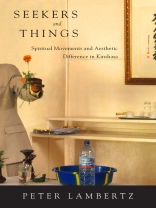Focusing on the intricate presence of a Japanese new religion (Sekai Kyûseikyô) in the densely populated and primarily Christian environment of Kinshasa (DR Congo), this ethnographic study offers a practitioner-orientated perspective to create a localized picture of religious globalization. Guided by an aesthetic approach to religion, the study moves beyond a focus limited to text and offers insights into the role of religious objects, spiritual technologies and aesthetic repertoires in the production and politics of difference. The boundaries between non-Christian religious minorities and the largely Christian public sphere involve fears and suspicion of ‘magic’ and ‘occult sciences’.
قائمة المحتويات
List of Illustrations
Acknowledgements
Introduction
Chapter 1. ‘Light in the Darkness’: Towards a Congolese Spiritual Movement ‘from Japan’
Chapter 2. Occult Sciences: (il)legitimate Secrecy and the Infrapolitics of Suspicion
Chapter 3. Blossoming Boundaries: (Re-)production and Contestation of Japanese Flower Practices
Chapter 4. Cleansing the City: Touch, Rubbish and Citizenship
Chapter 5. Experiencing Faith: Crisis, Miracles and Spiritual Healing
Chapter 6. (In) Touch without Contact: Johrei and the Aura of the Self
Chapter 7. Vibrating Words: Performative Silence and the Power of Words
Chapter 8. Imported Tradition: ‘Ancestor Worship’ as Reverse Orientalism
Conclusion
Bibliography
Index
عن المؤلف
Peter Lambertz is a post-doc fellow at the German Historical Institute (Paris) and the Centre des recherches sur les politiques sociales in Dakar. He holds a joint Ph D from the universities of Utrecht and Leipzig (Religious Studies/African Studies) and has been teaching at the Philosophat Edith Stein in Kisangani.












